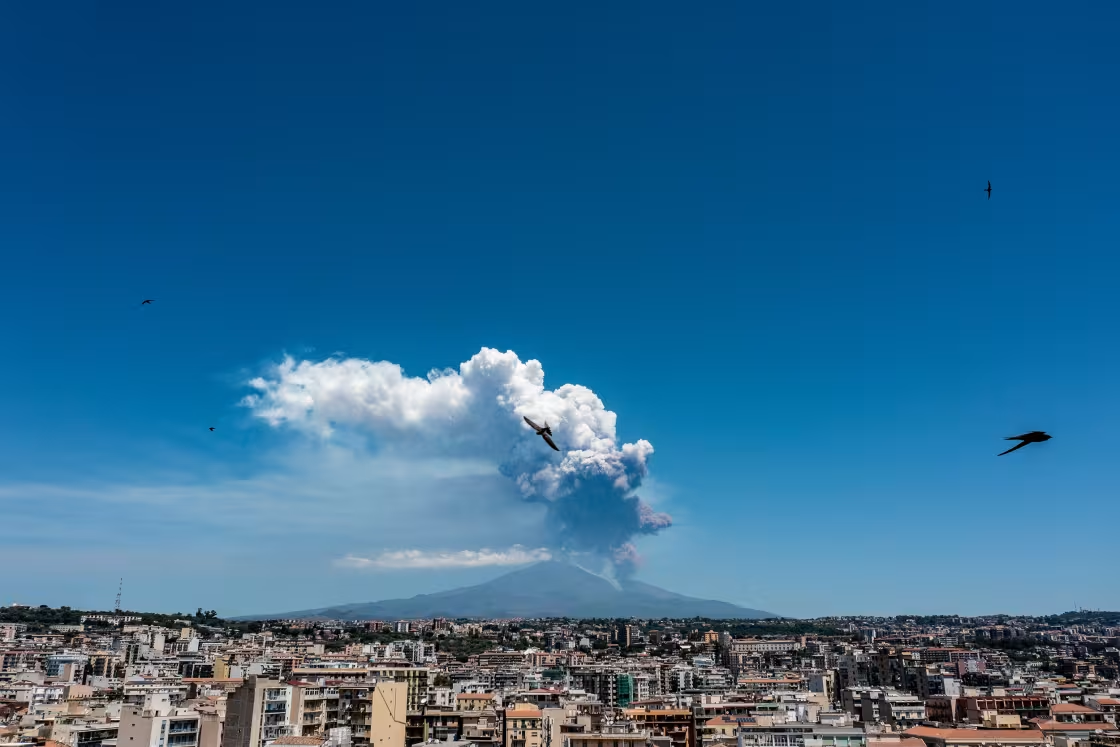Mount Etna, Europe’s most active stratovolcano, erupted violently on Monday, June 2, 2025, sending massive plumes of ash and volcanic steam into the sky above Sicily, Italy. The eruption, triggered by a partial collapse of the southeast crater, prompted tourists to flee as lava fountains and pyroclastic flows cascaded down the mountain. Here’s the latest on this fiery spectacle and how you can stay engaged and safe.
A Dramatic Volcanic Display
The eruption began with volcanic tremors around 10 p.m. local time on Sunday, peaking before 1 a.m., according to the Volcanic Discovery website. By noon, Italy’s National Institute of Geophysics and Volcanology (INGV) reported “explosive activity” escalating into a lava fountain, with infrared images showing molten lava flowing down Etna’s slopes. A plume of ash and gas soared to 6,400 meters, prompting a brief “code red” aviation alert, later downgraded to orange. Social media videos captured tourists running from the summit as thick smoke darkened the sky.

Minimal Disruption, Maximum Awe
Despite the eruption’s intensity, Sicily’s president, Renato Schifani, confirmed lava flows remained within natural containment areas, posing no immediate danger to local populations. The summit was closed to tourists, and Catania’s airport reported no flight disruptions, though an orange aviation warning remains. Etna, standing at 11,165 feet, has erupted multiple times in 2025, including in February, April, and May, often dusting nearby towns with ash but causing no major damage.
Tributes to Etna’s Power
Social media buzzed with awe and concern. One X user posted, “Mount Etna’s just coughed up more carbon and sulfur in 24 hours than a year of British farming,” highlighting the volcano’s raw power. Another shared a video captioned, “What a view! Insane,” showcasing the eruption’s spectacle
- Watch Live Footage: Stream real-time views of Mount Etna’s eruption on Brinx.TV or follow INGV’s updates on Facebook. Share your favorite clip on X with #EtnaEruption.
- Check Travel Alerts: Monitor flight statuses at Catania’s airport via FlightRadar24 to stay informed about potential ash-related disruptions.
- Stay Safe: If near Sicily, visit INGVvulcani for safety guidelines or contact local authorities for evacuation updates.
Mount Etna’s latest eruption is a reminder of nature’s untamed beauty. Act now—watch, share, or plan your travel safely—to experience this historic event from a safe distance.